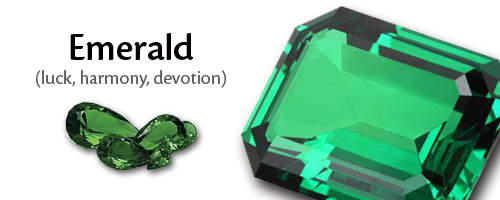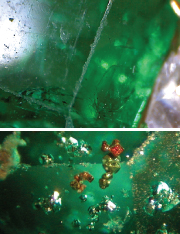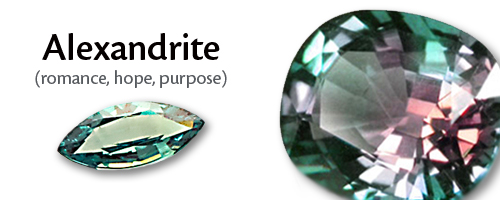 A mysterious stone Alexandrite is said to encourage joy and bring strength. With it’s colour changing ability this remarkable stone reminds us that sometimes life is not what it seems to be, it gives us hope and prompts us to find our purpose and universal origin.
A mysterious stone Alexandrite is said to encourage joy and bring strength. With it’s colour changing ability this remarkable stone reminds us that sometimes life is not what it seems to be, it gives us hope and prompts us to find our purpose and universal origin.
Emerald by day, ruby by night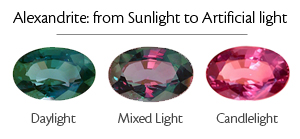
Alexandrite is often referred to as showing “nature’s bag of tricks” because of it’s changeable nature. This colour change mineral is green under natural sunlight, but under candlelight or incandescent light the gem shows red or raspberry pink. This stone can also exhibit another phenomena, cat’s eye.
Alexandrite was discovered in a nearly exhausted emerald mine in the Russian Ural Mountains. The gem was originally mistaken as emerald by the miners who found it in 1830’s Russia. It is said that at the end of the day the miners took the brilliant green stones back to their camp, and in the warm glow of their fire the stones shone vibrant red. The next morning they were brilliant green again, after that they realized a new previously unknown gemstone had been discovered.
A noble stone of rare birth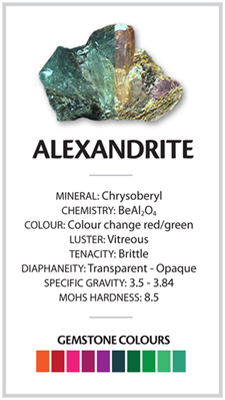
The discovery of the stone coincided around Russian tsar Alexander II’s coming of age – it’s namesake. It became recognized as the official gemstone of tsarist Russia, the colours green and red were old Imperial Russia’s military colors.
Alexandrite was formed in a geological scenario that occurred rarely in Earth’s history. The two main chemical elements that aid in the formation of the this crystal (beryllium and chromium) don’t as a rule coexist together. Silica (the second most common element in Earth’s crust) is lacking in these contrasting rock types making this gemstone genuinely rare. Quality Alexandrite is scarce and they hold a higher value than quality diamonds. The best stones were found in Ural Mountains in Russia but the stores have been depleted. Other countries mine the gem but their colours are less brilliant. This stone is now rarely found over three carats. Stones of excellent clarity over one carat are exceptionally rare.
What about the 4 C’s?
A few gemstones have qualities that increase the value and demand of a stone outside the box of the 4 c’s. The four C’s are: carat, cut, color, and clarity. While the previous factors are important Alexandrite is highly graded for the strength of it’s colour change, and the colours that appear under different lighting situations. Like the Emerald it often finds itself beyond the grading parameters used to determine the value of gems like diamonds.
Move over DeBeers
Tiffany’s popularized this rare gemstone. Their master gem buyer George Kunz apparently fell in love with Alexandrite and traveled Russia in search of it. It’s unknown how much he bought over the years, but Tiffany’s reserve of Alexandrite was large enough to corner the market for decades until the mineral was discovered in new locations worldwide.



